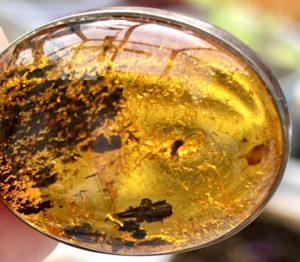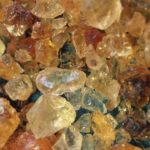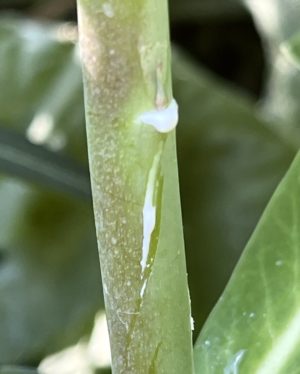Parts of a tree (2): Bark

As stated in the previous post, bark is a mixture of living and dead cells. Cork cells abound, especially in trees like the cork oak, where the cork may be regularly harvested. This may be used for flooring, insulation and yes - corks for wine bottles. However, bark is a source of many things. From early times, bark from trees like alder, buckthorn, oak, birch etc were used to make dyes for clothing. Material from the inner bark of some trees (e.g. lime, willow, mulberry) was a source of fibres for clothing and cordage (string / yarn).
Herbalists also found a use for the bark of certain trees. Infusions of willow were used to treat fevers, the ‘ague’, rheumatic aches and pain. It contains salicin, which the body converts to salicylic acid, an early 'form' of 'aspirin'. Interestingly, Nicholas Culpeper, in The Complete Herbal (of 1653) gives a number of uses for willow, including to staunch wounds, but does not mention pain control. The bark of the Cinchona [Jesuit’s bark] gave quinine - a treatment for malaria

Amber
When a tree, like a pine, is injured (through storm damage or insect attack), the bark can produce resin - a sticky and viscous liquid. The resin is produced in resin ducts present within the bark tissue, though the ducts may be present in deeper tissues. Research has shown that ponderosa pine trees that had more (and wider) resin ducts survived drought and bark beetle attack better. The resin can harden and help seal wounds . Many resins contain terpenes, such as alpha-pinene and limoneme. The resin from pine and other conifers can under special circumstances be converted into amber. Sometimes, the resins produced can be fragrant. Trees of the genus Boswellia and Commiphora produce a aromatic resin that gives frankincense and myrrh respectively. Both are produced by the wounding of a tree so that its resin seeps out. Both may be used in the making of incense.
Another bark exudate comes from certain species of Acacia - Gum arabic, which forms from the hardened sap (adjacent image). Acacia species belong to the ‘Bean’ family (Fabaceae).  The gum is collected from trees, mostly in Sudan and the Sahel. Gum arabic is a mixture of glycoproteins and polysaccharides. The polysaccharides are constructed from the sugars arabinose and galactose. It is soluble in water and edible, and has a number of uses in the food and pharmaceutical industries.
The gum is collected from trees, mostly in Sudan and the Sahel. Gum arabic is a mixture of glycoproteins and polysaccharides. The polysaccharides are constructed from the sugars arabinose and galactose. It is soluble in water and edible, and has a number of uses in the food and pharmaceutical industries.
Tapping or wounding the bark of different trees can result in various fluids being released, for example, latex. White or yellow latex is produced by the rubber tree (Hevea brasiliensis). The latex is found in special vessels within the bark - laticifers. The process of tapping rubber trees is outlined in some detail here. Latex production is not confined to woody trees, small herbaceous plants like dandelion and spurge can produce a white, milky latex (as can the opium poppy).

Euphorbia latex
The latex produced by some members of the Spurge family can cause burning pain, inflammation or even blistering - for example that of the Pencil tree. Such toxic saps most likely evolved to deter animals from grazing.
Sometimes, a watery sap may be collected from the bark. This is the case with Birch. Sap may be collected (tapped) in early Spring, when sugars and other materials are being mobilised for growth, leaf production etc. Sap may be collected later but is said to then have a bitter taste. The sap is an interesting ‘cocktail’ of amino acids, protein, sugars (glucose & fructose), betulinic acid, proteins, vitamins C & B, and minerals. It is used to make a much favoured drink in Northern Europe and should be consumed within days of collection. Birch trees are quite sensitive to tapping.
Not watery, but very sugary is Maple Syrup. Maple trees are tapped by drilling holes through their bark and into their trunks. Starch is stored in the trunks and roots before winter, it is then converted and mobilised in late winter / early Spring. The collected sap (through tapping) is then heated to produce a concentrated syrup.
Thanks to Montemari at Pixabay for image of gum arabic
Comments are closed for this post.

Thank you, that was very enlightening .
I now know that Frankincense and Myrrh are the produce of tree sap.
Thank you.
Lee.
Lee
18 June, 2023